Airfix

U-2 in 1/72 scale : Airfix kit review & modelling report
During the Cold War the vast unknown Soviet Union land led to an urgent surveillance need by the USA and particularly the CIA. Stalin had detonated their first atomic bomb help by his spies in the West the arms race continued. In 1950 at Eastman Kodak Richard Legton proposed that the only way to go was to fly over Soviet land with a reconnaissance aircraft and beyond missile reach at extremely high altitude of some 70,000 feet to avoid being shot down. This needed a whole new type of aircraft. A top secret program was started.
Proposals for such an aircraft included a modified B-57 Canberra by Martin as well as the aircraft proposed by the Bell and Fairchild companies. But Kelly Johnson of Lockheed in early 1954 made a unsolicited proposal as well that featured an aircraft with a very high aspect ratio wing and a sort of F-104 derived fuselage with a single engine that could accommodate advanced high resolution camera's. Design CL-282 looked like a sail plane, would get a J73 engine, fly at max Mach 0.8 speed, reach 70,000 ft and fly over 2,000 miles.
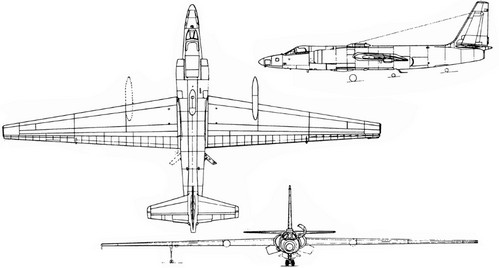
Kelly Johnson's CL-282 design was rejected by the USAF in preference of a modified B-57 and a Bell X-16 proposal. President Eisenhower became president in January 1953 and in August 1953 the Soviet Union detonated a hydrogen atom bomb and tensions increased in Soviet controlled East Germany and Berlin and the new Bison bomber. Further delays to acquire factual intelligence about Soviet threats were no option. The CL-282 was again considered involving the vital camera companies Eastman Kodak and Perkin-Elmer. Although the Air Force was not supporting the idea, it was proposed that the CIA would operate such a 70,000 ft capable aircraft based on the CL-282. At that time, the Lockheed team was busy with other projects but Kelly Johnson pursuaded the Lockheed management to accept November 1954 the contract. President Eisenhower also decided that the CIA would manage the project "with Air Force assistance". This very secret project AQUATONE with a covert budget involving the CL-282 design would eventually become the U-2. Baker and Perkin headed the camera systems work in the Boston area, one of the bigger challenges requiring also multi-camera rocking mounts.
Aircraft design work was done by Kelly's team at the Lockheed "Skunk Works" at Burbank , California. The design looked like a sail plane with a simple undercarriage and one pilot in a pressure suite. It had detachable "wet" wing halves with a gust control system and a payload/ camera bay aft of the cockpit. All was light weight with a 25 g limit load factor and all very fragile. A special kerosene JP-7 fuel was composed. But the constructed U-2 aircraft was ready as promised within 8 months.
It was thought crucial that tests would be conducted at a remote site. In Nevada atomic bomb tests were made and area at a former aerial gunnery range Groome Lake in Nevada was picked , some 40 miles north of the town Indian Springs. At Groome Lake facilities were realised within a few months, personnel selected and screened "at appropriate security level". This area was to be referred to ironically as "Water Town" and the aircraft "articles" with nickname "Angel" and pilots "drivers". Technicians, pilots and other support personnel for the "angels" stayed on the desert Groom Lake site with few leasure facilities which Kelly Johnson called the "Paradise ranch". Personel transfer flights were made to Las Vegas and Los Angeles using DC-3, C-54 and large cargo planes were used as well. It was decided to use the "utility designation" U-2 for the type and apply covert NACA markings. On the map coordinate 51 Groom Lake the following decades the range would evolve to the large secret test base known "Area 51" with also the Tonopah range.
A C-124 flew the first U-2 prototype "article 341" 25 July 1955 in sections to Groom Lake. It was fitted with a J57/P-37 engine. Unintended first flight of "article 341" was August 1, 1955 piloted by LeVier. The plane accidently popped briefly into the air at 70 knots during a high speed run. Followed was a hard landing and it had to be repaired. Several "angels" were used for testing and getting the systems operational. Most had bare metal silver finishes and NACA markings and if seen in any case by the public bright UFO's were reported but is was stated that the blinking sail plane was "to study cosmic rays and high weather...".
The U-2 could be fitted with several payload packages, not only advanced camera packages developed by several companies in secret but also various radar detectors, listeners and air sniffers. It needed caution while flying with at high altitude just 6 MPH stall margin and was difficult to land in ground effect. The single pilot needed hours prior to a flight breath pure oxygen O2, wear a special suite and fully closed face mask. A complete U-2 with its equipment could be transported in a single C-124 Globemaster to small fields all over the World. May 1956 four U-2 were deployed to Lakenheath in the United Kingdom. A local "high weather" test flight was made but caused public uproar and their was an espionage incident. It was decided to move the detachment mid June 1956 to Wiesbaden West Germany without informing the West German authorities. The four U-2 were retrofitted with the improved J57/P-31 engine and re-designated U-2B. After severe doubts, president Eisenhower approved the start of secret flights June 1956 over Eastern Europe. Secret flights began July 4, 1956 with the U-2 "article 347" over the Soviet Union towards Minsk and Leningrad. Soon, a few missions were flown to acquire accurate intelligence about Soviet Myasischev Bison bombers. It was still unclear if Soviet radars could track the U-2 but photos revealed that MiG-15 and MiG-17 had attempted to intercept but were unable to reach sufficient altitude. Soon, official Soviet protests were made at the US Moskou embassy July 10, 1956. The flights were denied but with only 8 flights made, these were halted for the time being. Meanwhile, it was clear that a rumoured big Soviet Bison bomber fleet was non-existent.
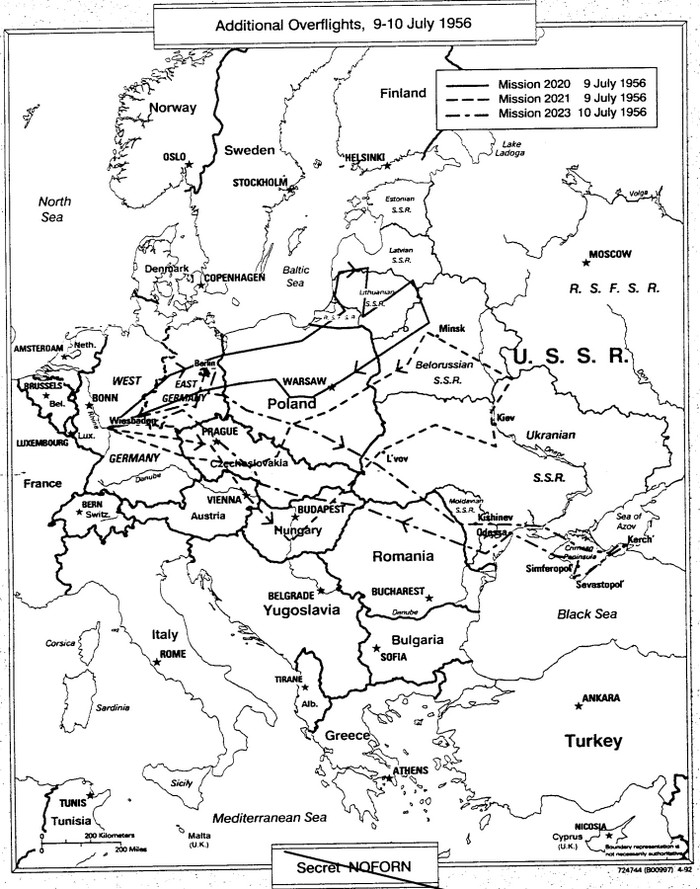
U-2 missions were flown in other parts of the World as well such as during the Suez crisis August 1956 for more tactical reconnaissance. A U-2 deployment operated from Adana/ Incirclik Turkey. The crisis on Hungary led to Eisenhower's decision to resume high altitude flights over Eastern Europe but over Soviet border regions only. Meanwhile some work was done to reduce U-2 radar detection and these prepared U-2's were called "dirty birds". June 1957 from Alaska new Soviet overflights were resumed by Detachment C to investige Soviet ICBM sites in the East. U-2's flown were still detected though by Soviet radars. Later this U-2 deployment moved to Atsugi in Japan as from Yokota in those days secret "BLACK KNIGHT" RB-57 were deployed. August 1957 saw deployment from Peshawar in Pakistan with flights over the Soviet Kazachstan Tyuratam "Baikonur" rocket launch site and Krasnojarks with also a few flights over communist China. Soviet ICBM tests were made at "Baikonur" and other sites. Also recon WS-461 balloons were deployed but sometimes fell down in communist territory. This was a great concern of president Eisenhower. In the Soviet Union the YAK-25 "Mandrake" was used to train MiG-19 and MiG-21 pilots to intercept any overflying U-2. The U-2's were painted in a "blue black" paint coat to disguise them and got the Pratt en Whitney J75/J-13 engine enabling some 74,600 ft altitude designated U-2C. The got larger air intakes and a canoe on top of the fuselage.
August 1958 also the British were involved in the U-2 operations to have greater "sponsorship" to spread the risks in the event of a loss. It also would allow British flights over the Middle East but under CIA control under the cover story of "high weather" research.
The Soviet Union ICBM missile program of party leader Nikita Krushchev led to resumed flights over the Soviet Union from the summer of 1959 as there was a fear of a "missile gap". On December 6, 1959, a British manned U-2 flight was made from Peshawar in Pakistan towards Kuybishev and Saratov Engels airfield and the Kapistun Yar missile range, landing at Incirclik Turkey. February 5, 1960 another "British" flight was made from Peshawar. April 9, 1960 another flight was made but probably new Soviet radars were deployed.
A few U-2 flights were flown under code name "GRAND SLAM" that departed out of Peshawar Pakistan to fly towards Norway over mid Russia to look at ICBM sites. A few attempts were made 27 and 28 April 1960 but aborted due to bad weather. On Labour Day May 1, 1960 another flight mission 4154 took off with pilot Gary Powers. Powers in his U-2C was hit half way the mission near Swerdlovsk as a Soviet SA-2 missile detonatied near his aircraft at 70,500 ft. So Powers had to bail out with parachute and in his pressure suite. The self-destruct mechanism could not be triggered during the bail out and large complete U-2 debris were found by the Soviets. May 5, communist party chairman Nikita Krushchev announced a US spy plane had been shot down without telling the fate of its pilot. A few days later it was revealed that Powers was still alive. A large public trial was held but three months later Powers was "exhanged" for the Soviet spy Rudolf Abel, who's real name was Fisher. U-2 flights were suspended over the Soviet Union though a single U-2 remained in silence at Incirclik/ Ardana Turkey. The U-2 detachment in Akagi Japan was faced July 1960 by anti-American sentiment and the detachment withdrawn to the USA.
New American approval procedures for any U-2 flights were implemented. In the Caribbean, from 1959 Communist Cuba saw an increase of U-2 flights end 1960 and 1961 under the new president Kennedy administration. The U-2 was to get an in-flight refuelling capability also driven by long range missions over South East Asia and 6 modified U-2's were designated U-2F though the in-flight refuelling led to several crashes. April 1961 there was the ill-fated "Bay of Pigs" invasion at Cuba. Mostly from Laughlin AFB, Texas Project NIMBUS several flights were executed over Cuba. Arms were delivered to Cuba by the Soviet Union. SAM sites at Cuba were constructed and Cuban MiG-21 discovered at Cuba Santa Clara airfield. September 1962, evidence was mounting that the Soviet Union was planning the deployment of MRBM ballistic missiles in Cuba.
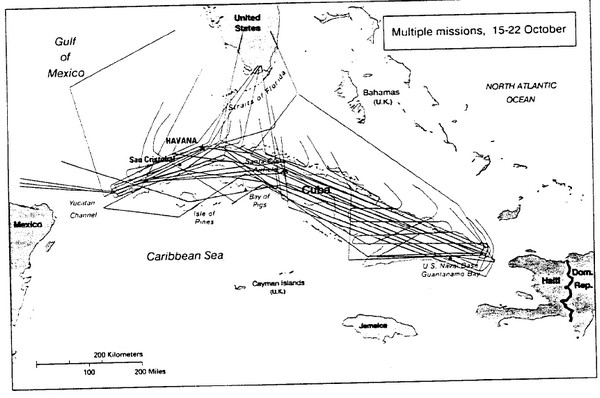
Several missions were flown but October 27 an U-2D was shot down by a SA-2 missile over Cuba killing the pilot. The Cuba missile crisis was a fact after Soviet ships were seen with missiles on board. This was de-escalated by Kennedy with Nikita Krushchev, the US would remove missiles from Turkey. December 1963 also some U-2 flights were made over Venezuela and the Guyanas from Ramey AFB at Puerto Rico as pro-Castro movements were suspected.
In Asia also U-2 flights were made starting in 1958. As Sukarno was in power in Indonesia, from March 1958 some 30 U-2 flights were made by Detachment C from Cubi Point Naval Station in the Philippines. Also tensions between China and Taiwan saw deployments from Akagi in Japan. A few missions were flown over Tibet from Ta Khli, Thailand from August 1959 to mid 1960. January 1961 also flights were made from Cubi Point over Laos and North Vietnam.
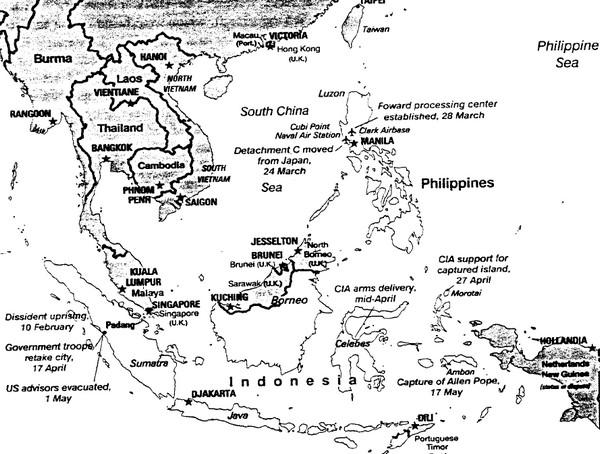
Nationalist Chinese pilots (Taiwan) were involved with the CIA to fly in the Asian region with US RB-57 aircraft. The Taiwanese RB-57A pilots had been trained earlier at Wendover AFB in Utah. With 2 RB-57A flights from Taoyuan Taiwan began December 1957 but 2 months later an aircraft was shot down by Chinese MiG-19s. New training started but now for the RB-57D. At the time CIA/USAF U-2's were flying from Okinawa but in 1960 it was decided to deploy U-2 aircraft to Nationalist China / Taiwan in Project TACKLE. So in 1959 Taiwanese pilots were sent to the USA to train but still thought to be for the RB-57. At Laughlin AFB they heard of the top secret U-2. Training was difficult as there were only American manuals and the U-2 was also overy difficult to fly, some accidents happened. January 1961 the first 2 U-2C arrived in Taoyuan Taiwan with the weather research covert to fly with the Black Cats squadron. The U-2C had the more powerfull J75 engine. One U-2C had Taiwanese markings, the other had no markings. A U-2 crashed in March 19, 1961 and replaced. Not earlier than January 1962 started "Taiwanese" overflights over Communist China, some flying all the way to the Mongolian border. The U-2 missions were important as hardly information was known about communist China mainland interior.

September 8, 1962 a U-2 with a Taiwanese "Nationalist China" pilot was shot down over Communist China. Additional U-2's were deployed and some 102 overflights over China made until February 1968. Additional 118 coastal missions were made until end 1974. In total 5 U-2's were lost in combat and 6 had fatal accidents.
A peculiar task was that some U-2C carrier tests had been done earlier mid 1963 during Project WHALE TALE from USS Kitty Hawk off the Californian coast. A mission was to investigate the French nucleair test site at the Mururoa Atol in the Pacific. On May 19, 1964 in operation FISH HAWK a modified U-2G took off from a US aircraft carrier, the USS Ranger.
Meanwhile, new aircraft had been ordered and a new version was delivered. The U-2R had a longer fuselage, wider wing span and new and more cameras. They also had better flight characteristics with a 20 MPH stall margin. The CIA and USAF would get 6 U-2R each. But the era of long secret long overflights was over. The aircraft of Project OXCART started in 1956 appeared, highly secret and taking over along with US satellites the U-2 strategic tasks that would become the A-12 (and later SR-71).
Some 48 U-2A were built and flown at times from fields all over the World. It was operated by both CIA and the USAF with the name "Dragon Lady". The U-2R later would be developed as a much larger TR-1 with a grand total of some 100 U-2 / TR-1 manufactured.

Airfix released a 1/72 kit of the Lockheed U-2 in 1983 as kit #04028. It is a very nice kit, with only before that vacuforms being available. The U-2D was an IR detection version.
Tip: the much larger Lockheed TR-1 is available from Special Hobby in 1/72.
Though in the Airfix kit panel lines are raised, it can be made into a nice kit. I tried to keep these raised lines while sanding.
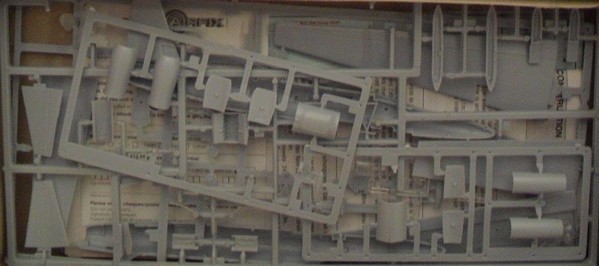
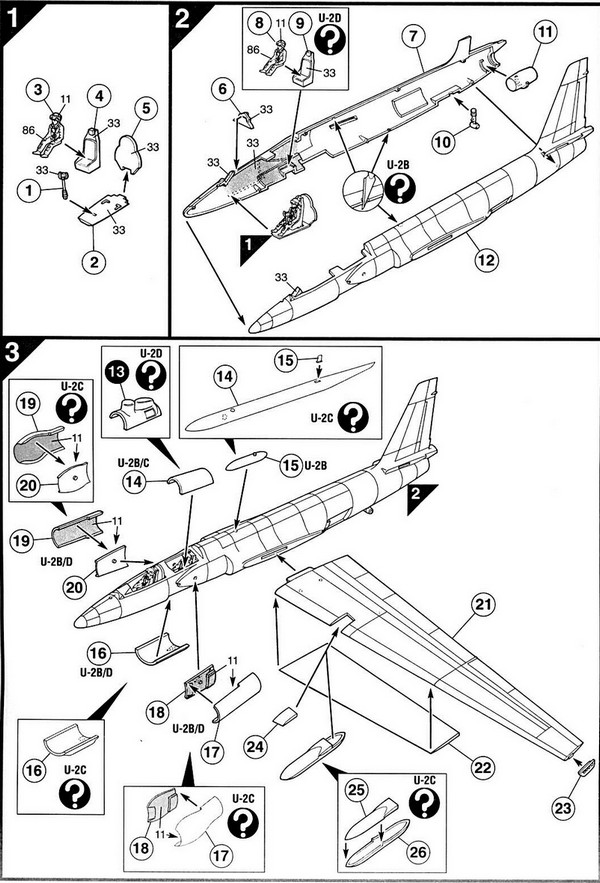
The instructions are typical Airfix and a bit unclear in places. The intake parts have same numbers?. The larger ones are for a U-2C.
Schemes for 2 U-2 with decals are provided with a peculiar one being half black/ half metal. Kit decals are for 2 schemes.
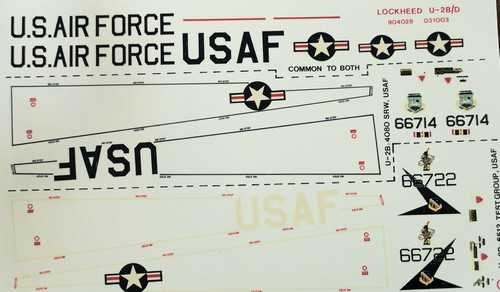
The kit was made as U-2D straight out of the box in no time. Intakes take some work and putty to fix. Enamels were airbrushed with silver lower areas and black. Some details were added in the front cockpit from scrap as it is a bit basic.
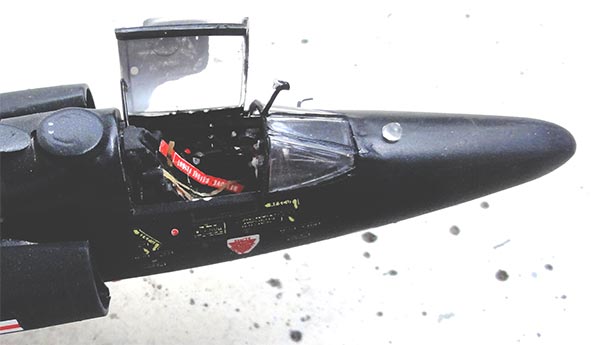
The canopy hood was set open. Note the "remove before flight" ribbon.
An black scheme for U-2D 66722 was added with a lighter front belly.
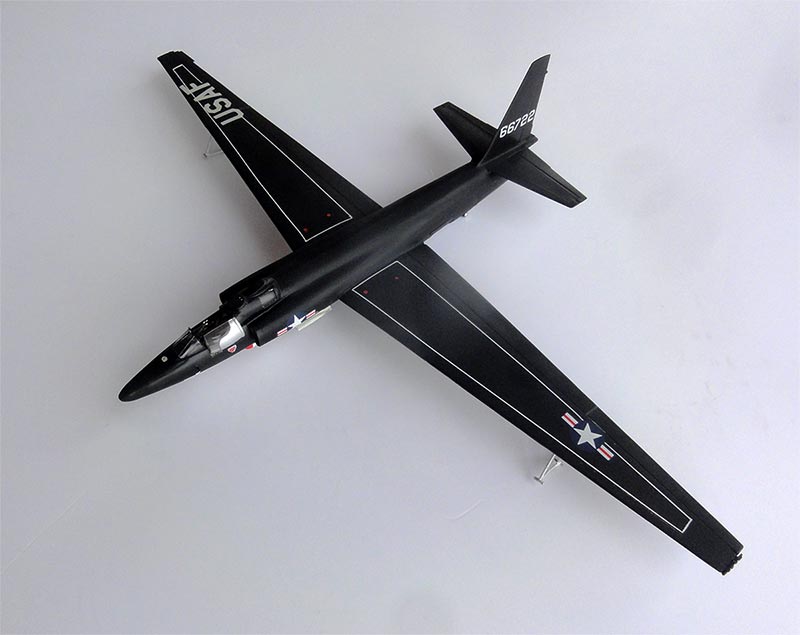
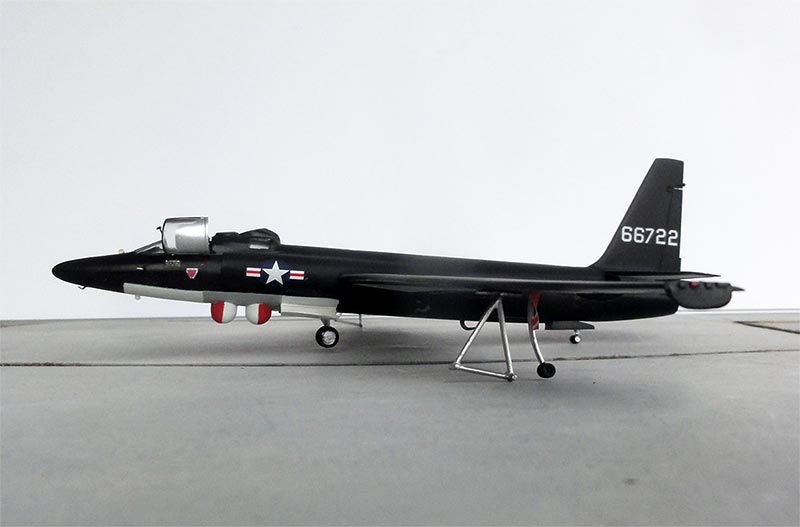
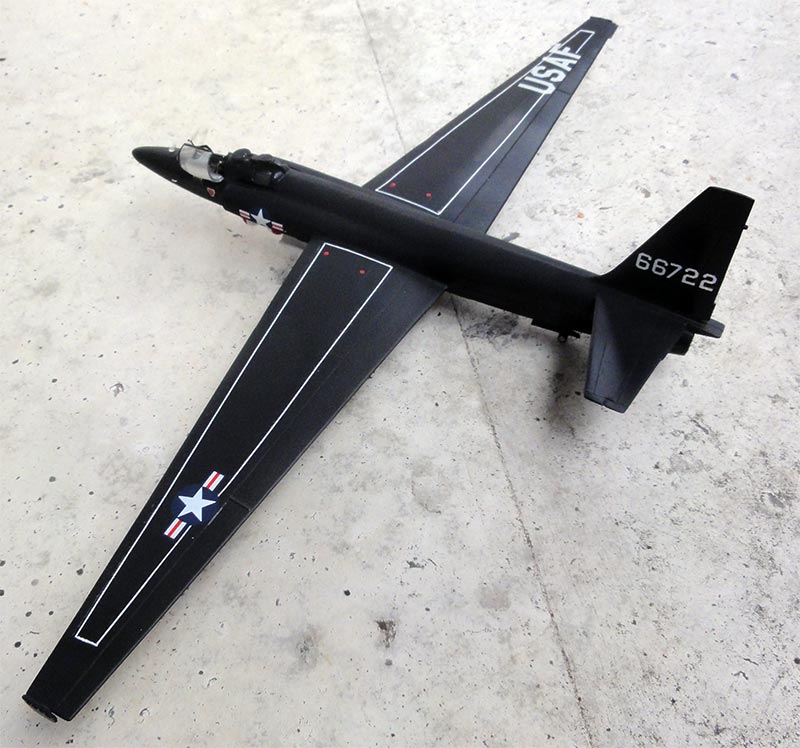
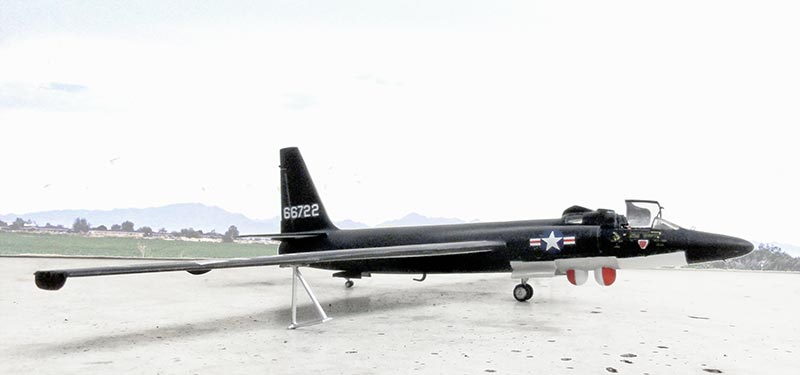
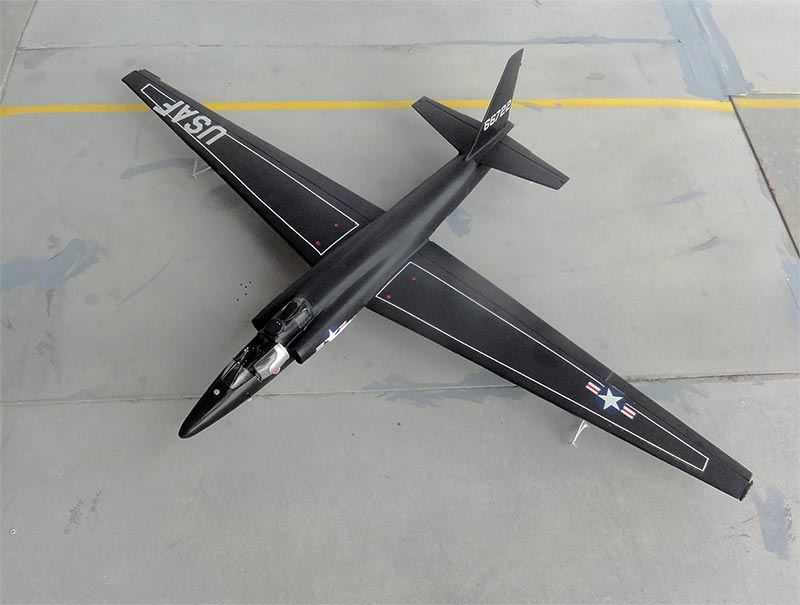

References:
- X-planes, Jay Miller, AeroFax publ.
- U-2 spyplane, Squadron Signal publications #1086, Larry Davis
- 75 years Skunk Works, James Goodall, Osprey publishing, 2021
- Rob de Bie page about the U-2 and several kits
- CIA U-2 and Oxcart Program report, declassified 2013/06/25
- U-2 Taiwans Black Cat squadron, Power History, Spring 2022
- U-2C conversion and Cuba crisis, Steven Di Nucci, Scale Aircraft Modelling, Oct 2022
Back to 1/72 Models

(c) Copyright "designer"/ All rights reserved. Your comments are welcomed by webmaster
Created this page January, 2005